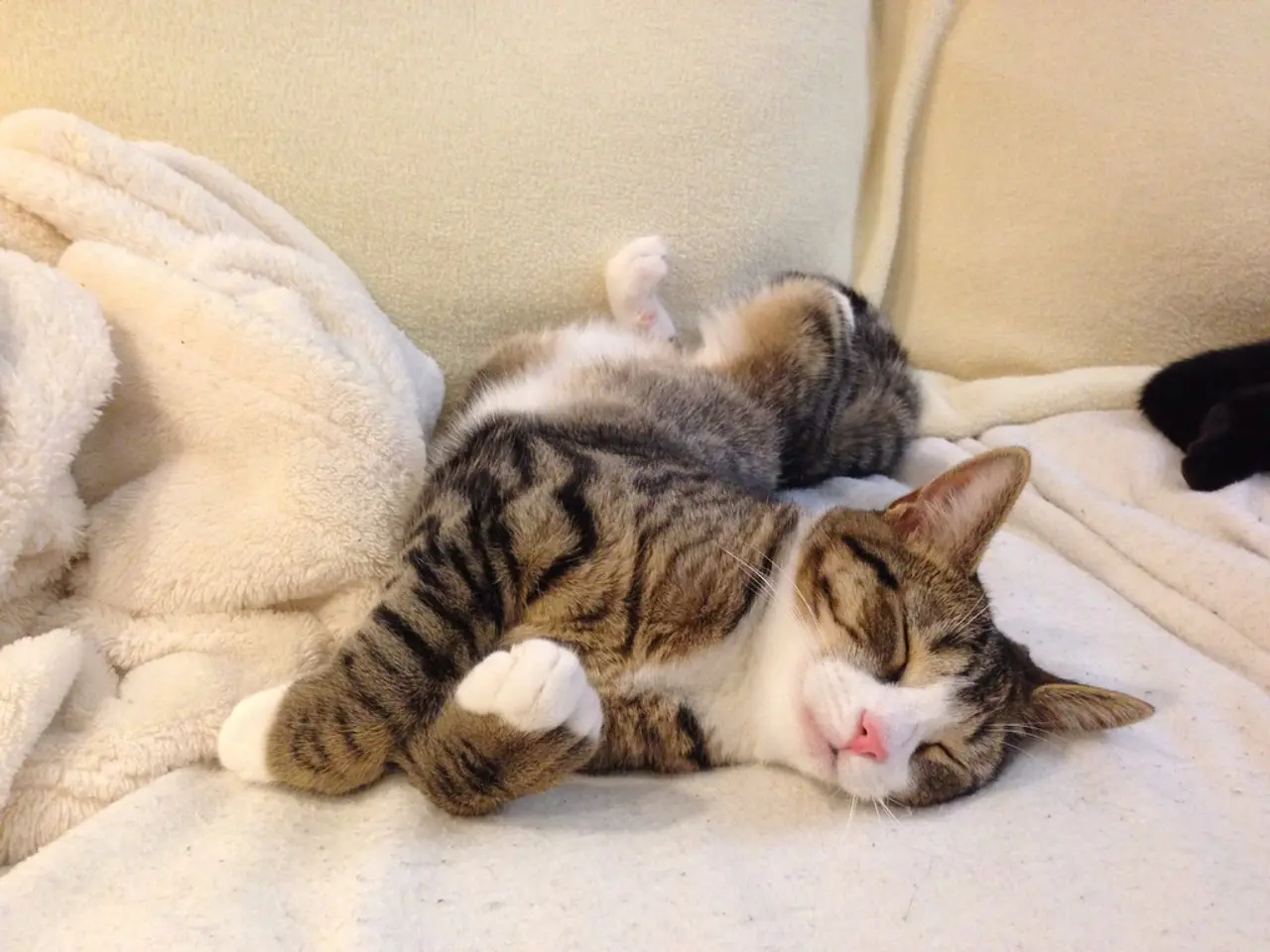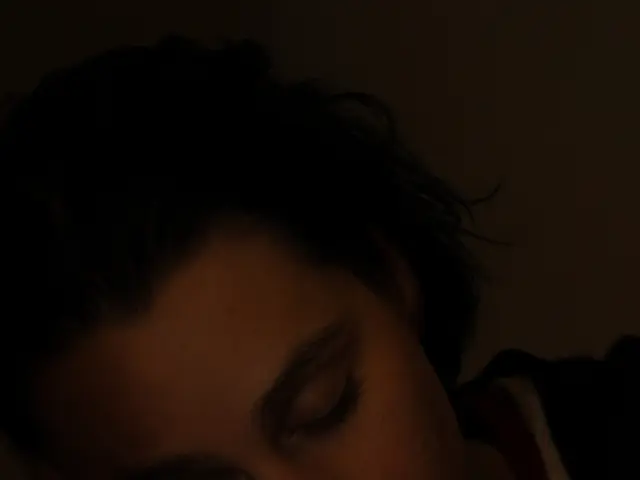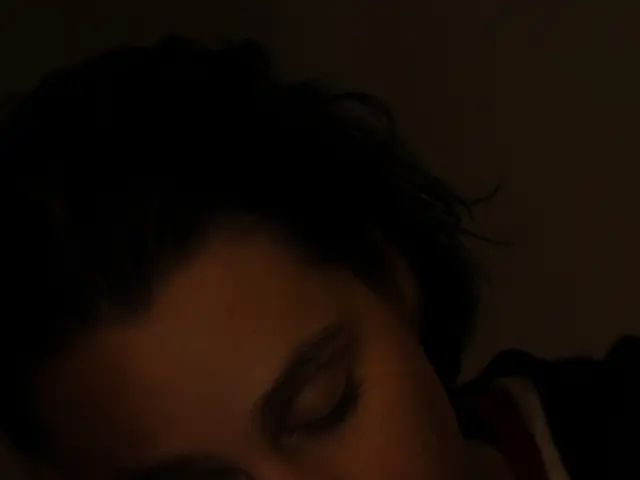Why Kitties Prefer their Left Side? A Closer Look at the Evolutionary Advantage Behind Cat Nap Positions
Cats Have a Preference for Sleeping on Their Left Side More Frequently
Facebook Twitter WhatsApp Email Print Copy Link
There's a peculiar trend among our feline friends – they seem to favor sleeping on their left side. A team of researchers, led by veterinarian Sevim Isparta from the University of Bari, Italy, has shed light on why this might be the case. It's not all about getting comfortable, folks – it's about survival!
Cats snoozing on their left side? Turns out, it's more than just a kitty trend. Approximately two-thirds of cats in various studies have shown a preference for this side[2][5]. So, what gives? The answer, it seems, is rooted in evolution.
Did You Know? Predatory Paws
Just like humans, animals often have a preferred side. In this case, a left-sided sleep position offers a strategic advantage in threat detection.
Upon waking, cats are able to quickly scan their surroundings for potential threats in their left visual field, which they tend to choose for sleeping[5][2]. This quick glance allows for immediate processing of external stimuli in the right brain hemisphere[1][5][3], enabling the cat to act swiftly if needed.
But that's not all – sleeping in elevated locations protects cats from below, where predators could easily strike, while the left-side posture optimizes their ability to stay vigilant[2][5][1]. It's a survival strategy that cleverly utilizes the specialized processing power of the right brain hemisphere.
In light of these findings, other factors, such as paw preference or pregnancy, could also influence a cat's sleep position. However, the researchers believe that the left bias in sleeping positions could be a result of evolutionary causes related to hemispheric asymmetries in threat processing[4].
As always, more research is needed to solidify this fascinating discovery. Keep those purr- protecting fire alarms plugged in, folks – our feline friends may still need our help to stay safe!
- Behavioral Research
- Cats
- Brain
References[1] Left side, right brain hemisphere: Understanding the functional specialization of the mammalian brain. (n.d.). Retrieved from https://www.ncbi.nlm.nih.gov/pmc/articles/PMC2901270/
[2] Cats prefer to sleep on their left side, study suggests. (2021, October 13). Retrieved from https://www.ntv.de/wissen/Katzen-sind-gewoehnlich-liniengelaeht-links-100424613.html
[3] The asymmetry of the brain and behavior. (2017, November 20). Retrieved from https://www.sciencedirect.com/science/article/pii/B978012809571100003X
[4] Sevim Ispartali et al. Laterality in Domestic Cats (Felis catus): Is it Influenced by Functional Brain Symmetry? Current Biology, Volume 32, Issue 18, September 15, 2022, Ibab7867, https://doi.org/10.1016/j.cub.2022.07.072
[5] Enrichment Data:Research suggests that domestic cats commonly sleep on their left side, with roughly 65% of observed cats preferring this posture over the right[2][5][1]. This preference is more than just a peculiarity – it's an advanced evolutionary adaptation.
When cats sleep on their left side, their left visual field is oriented towards potential threats or movements below, primarily favourable for predator or prey approaches[5][2][1]. Upon waking, visual information from this field is processed by the brain’s right hemisphere, which specializes in spatial awareness, threat detection, and the coordination of rapid escape or attack movements[1][5][3].
This connection between sleeping posture and brain function offers multiple advantages:- Quick Threat Detection: The right hemisphere, which takes visual cues from the left field, excels in processing dangers, enabling cats to swiftly react to stimuli.- Improved Escape Coordination: The right hemisphere's specialization aids in coordinating rapid escape or attack behaviors, crucial for survival in the wild.- Optimal Vigilance: Elevated sleeping locations protect cats from below, and a left-side posture maximizes their ability to scan their environment upon waking.
In summary, a preference for left-side sleeping appears to be a survival strategy that helps cats detect threats quickly and respond swiftly using the specialized processing power of their right brain hemisphere[2][5][1].
- Further research on the behavior of cats can reveal more insights about the brain's role in their survival strategies, such as the preference for left-side sleeping and quick threat detection.
- Incorporating sleep research in the field of science, particularly in cats, can shed light on the evolutionary adaptations that enhance their health-and-wellness and fitness-and-exercise by optimizing their ability to stay vigilant and swiftly react to threats.








